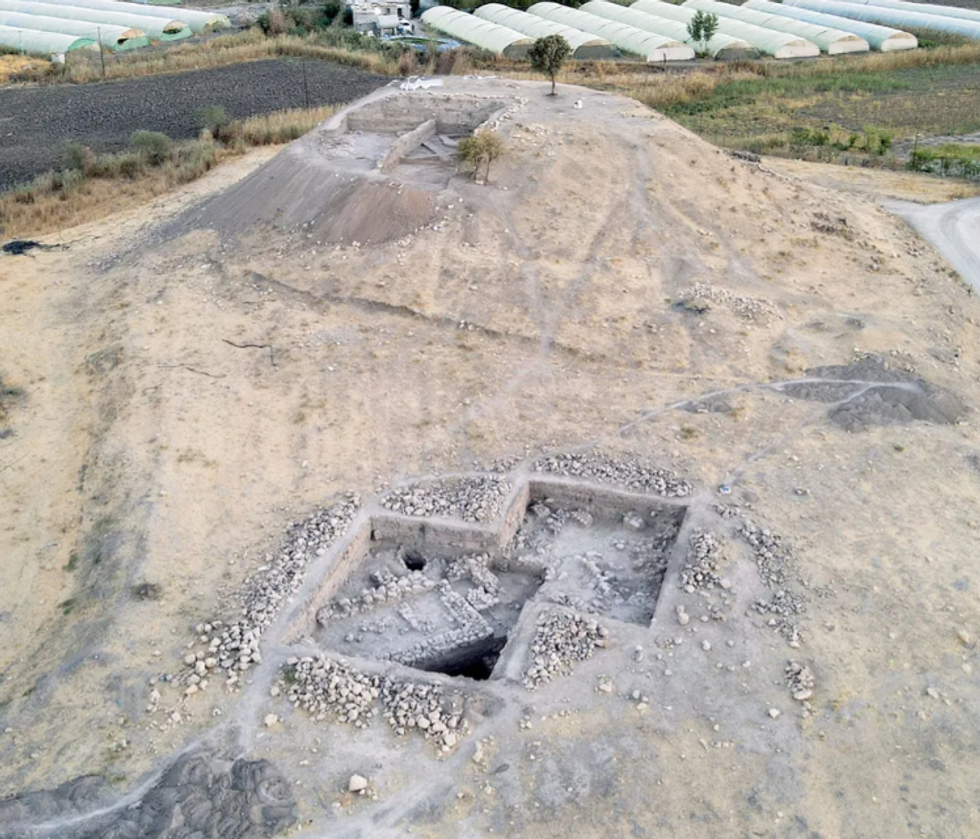Archaeology breakthrough as ‘transformative’ discovery of 5,000-year-old building has ties to ‘one of world’s first cities’

The settlement's location is approximately 480 kilometres north of ancient Uruk
Don't Miss
Most Read
A monumental 5,000-year-old structure has been uncovered by archaeologists in northern Iraq.
The excavation at Kani Shaie in Sulaymaniyah Governorate revealed architectural remains dating to approximately 3300-3100 BCE.
The research team said: "If the monumental nature of this building is confirmed which we are now investigating in detail the discovery could transform our understanding of Uruk's relationship with surrounding regions."
The site, situated in the Zagros Mountain foothills, showed evidence suggesting the structure served as an official edifice, possibly functioning as a religious temple during the Uruk era.
Archaeological evidence points to the building's ceremonial significance, with researchers uncovering distinctive architectural elements characteristic of public structures.
Decorative clay and stone cones, pressed into plaster walls to create geometric mosaics featuring triangular and zigzag patterns, adorned the edifice.
The excavation uncovered administrative artefacts, including cylinder seals, which signified political authority during the Uruk era.
A fragmentary gold pendant discovered at the site indicates wealth display within the ancient community.

A monumental 5,000-year-old structure has been uncovered by archaeologists in northern Iraq
|UNIVERSITY OF COIMBRA
These findings suggest the structure was a "cultic space" for worship, based on the archaeological team's assessment of the building.
The settlement's location is approximately 480 kilometres north of ancient Uruk.
Walking between the two sites would have required roughly a fortnight's journey.
Rather than existing in isolation, the site appears to have been integrated into Uruk's sphere of influence, suggesting the ancient city's reach extended far beyond previously recognised boundaries.
LATEST DEVELOPMENTS

The excavation at Kani Shaie in Sulaymaniyah Governorate revealed architectural remains dating to approximately 3300-3100 BCE
|UNIVERSITY OF COIMBRA

The site is situated in the Zagros Mountain foothills
|UNIVERSITY OF COIMBRA
Archaeological work at Kani Shaie has been ongoing since 2013.
It revealed human habitation that spans from the Chalcolithic era, approximately 6500 BCE, through to 2500 BCE.
Researchers said: "Kani Shaie is regarded as the most important archaeological site east of the Tigris River for understanding the sequence of human occupation from the Early Bronze Age through to the 3rd millennium BC."
At its peak around 2900 BCE, Uruk had an estimated population of 50,000 to 80,000 residents, making it the largest urban centre in the world at the time.

The excavation uncovered administrative artefacts, including cylinder seals
|UNIVERSITY OF COIMBRA
It spanned 400 hectares with organised street grids and distinct administrative and residential districts.
The earliest known examples of writing, in the form of proto-cuneiform pictographic tablets, were discovered in their.
The civilisation pioneered cuneiform script, numerical notation for agricultural records, and the ziggurat architectural form that would define Mesopotamian temple construction for millennia.
The city remained inhabited until it was finally abandoned around 700 CE, likely due in part to a shift in the course of the Euphrates River.











